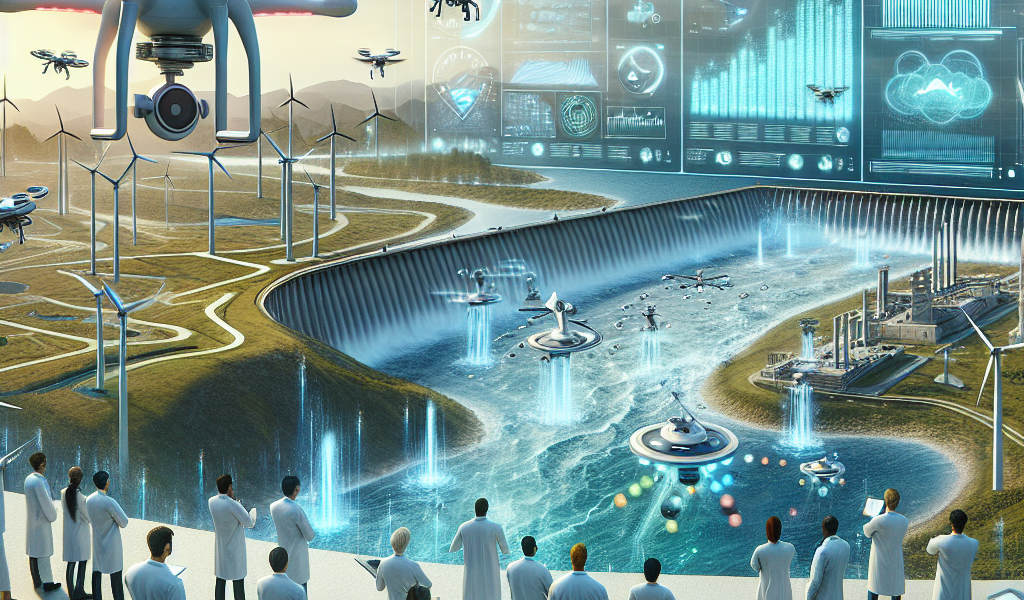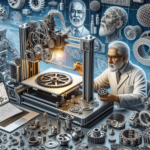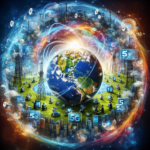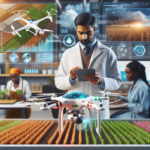-
Table of Contents
“Smart Solutions for a Thirsty World: Revolutionizing Water Management with Technology”
Introduction
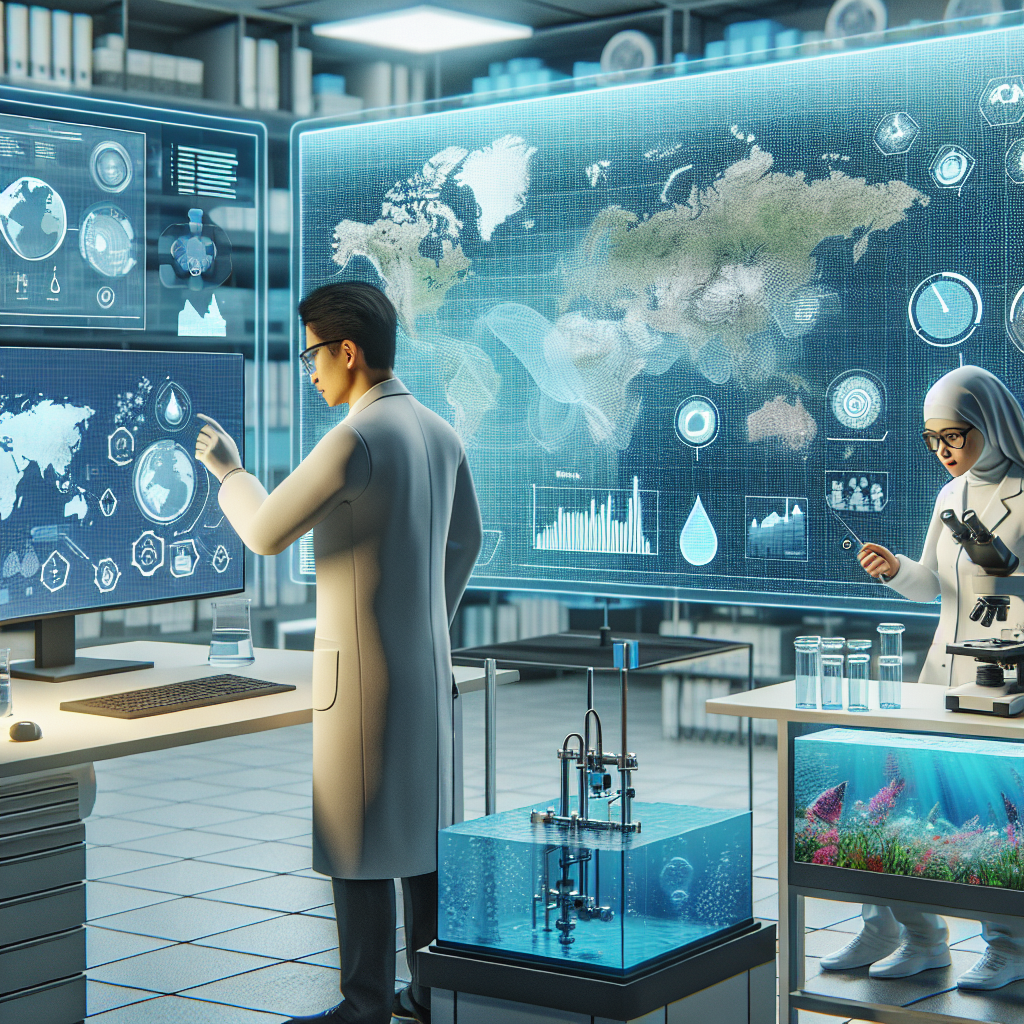
Water management is undergoing a transformative shift, driven by advancements in technology that are enhancing efficiency, sustainability, and accessibility. Innovations such as smart sensors, data analytics, and remote monitoring systems are enabling more precise control over water resources, reducing waste, and optimizing usage. These technologies facilitate real-time monitoring of water quality and distribution, predictive maintenance of infrastructure, and better management of agricultural irrigation. Additionally, the integration of artificial intelligence and machine learning is providing deeper insights into water consumption patterns and helping to forecast future needs. As a result, technology is playing a crucial role in addressing global water challenges, ensuring that this vital resource is managed more effectively for both current and future generations.
Smart Irrigation Systems: Revolutionizing Agricultural Water Use
In recent years, the agricultural sector has witnessed a transformative shift, thanks to the advent of smart irrigation systems. These innovative technologies are revolutionizing water management practices, offering a promising solution to the age-old challenge of efficient water use in farming. As the global population continues to grow and climate change exacerbates water scarcity, the importance of smart irrigation systems cannot be overstated.
One of the most significant advantages of smart irrigation systems is their ability to optimize water usage. Traditional irrigation methods often result in overwatering or underwatering, leading to wasted resources and suboptimal crop yields. In contrast, smart irrigation systems leverage advanced sensors and data analytics to deliver precise amounts of water based on real-time conditions. These systems monitor soil moisture levels, weather forecasts, and plant water needs, ensuring that crops receive just the right amount of hydration. This not only conserves water but also enhances crop health and productivity.
Moreover, smart irrigation systems are designed to be user-friendly, making them accessible to farmers of all scales. With the integration of mobile apps and cloud-based platforms, farmers can easily monitor and control their irrigation systems remotely. This level of convenience allows for timely adjustments, even when farmers are not physically present in the fields. For instance, if a sudden rainstorm is predicted, the system can automatically reduce or halt irrigation, preventing unnecessary water use. This adaptability is particularly beneficial in regions prone to unpredictable weather patterns.
In addition to water conservation, smart irrigation systems contribute to energy savings. Traditional irrigation methods often rely on energy-intensive pumps and equipment, leading to high operational costs. By optimizing water delivery, smart systems reduce the need for excessive pumping, thereby lowering energy consumption. This dual benefit of conserving both water and energy makes smart irrigation an environmentally sustainable choice.
Furthermore, the integration of artificial intelligence (AI) and machine learning (ML) in smart irrigation systems is pushing the boundaries of agricultural innovation. These technologies enable predictive analytics, allowing farmers to anticipate water needs based on historical data and trends. For example, AI algorithms can analyze past weather patterns, soil conditions, and crop growth stages to forecast future irrigation requirements. This proactive approach helps farmers make informed decisions, ultimately leading to better resource management and higher crop yields.
The economic impact of smart irrigation systems is also noteworthy. By reducing water and energy usage, farmers can significantly cut down on operational costs. Additionally, healthier crops and improved yields translate to higher profits. In the long run, the initial investment in smart irrigation technology pays off, making it a financially viable option for farmers.
Despite the numerous benefits, the adoption of smart irrigation systems is not without challenges. High upfront costs and the need for technical expertise can be barriers for small-scale farmers. However, government subsidies, grants, and educational programs are gradually addressing these issues, making the technology more accessible. Collaborative efforts between technology providers, agricultural organizations, and policymakers are crucial in promoting widespread adoption.
In conclusion, smart irrigation systems are revolutionizing agricultural water use by optimizing water delivery, conserving energy, and enhancing crop productivity. As technology continues to advance, these systems will play an increasingly vital role in sustainable farming practices. By embracing smart irrigation, farmers can not only improve their operational efficiency but also contribute to global efforts in water conservation and environmental sustainability.
IoT Sensors: Enhancing Water Quality Monitoring and Management
In recent years, the integration of technology into water management has revolutionized the way we monitor and maintain water quality. One of the most significant advancements in this field is the use of Internet of Things (IoT) sensors. These small, interconnected devices are transforming water management by providing real-time data and insights that were previously unattainable. As a result, they are enhancing our ability to ensure safe and clean water for communities around the globe.
IoT sensors are designed to collect and transmit data on various water quality parameters, such as temperature, pH levels, turbidity, and the presence of contaminants. By continuously monitoring these factors, IoT sensors enable water management authorities to detect issues early and respond promptly. This proactive approach is a stark contrast to traditional methods, which often relied on periodic sampling and laboratory analysis. With IoT sensors, the data is available in real-time, allowing for immediate action when necessary.
Moreover, the deployment of IoT sensors in water bodies and distribution systems has made it possible to create comprehensive water quality maps. These maps provide a detailed overview of water conditions across different regions, helping authorities identify patterns and trends. For instance, if a particular area consistently shows higher levels of contaminants, it can be flagged for further investigation and remediation. This targeted approach not only improves water quality but also optimizes resource allocation, ensuring that efforts are focused where they are needed most.
In addition to monitoring water quality, IoT sensors play a crucial role in managing water resources more efficiently. By tracking water usage and detecting leaks in real-time, these devices help reduce water waste and ensure that supply meets demand. For example, smart meters equipped with IoT sensors can provide homeowners and businesses with detailed information about their water consumption. This data empowers users to make informed decisions about their water usage, promoting conservation and reducing costs.
Furthermore, IoT sensors are instrumental in managing agricultural water use. Agriculture is one of the largest consumers of water, and efficient irrigation is essential for sustainable farming. IoT sensors can monitor soil moisture levels and weather conditions, providing farmers with precise information on when and how much to irrigate. This precision agriculture approach not only conserves water but also enhances crop yields and reduces the environmental impact of farming practices.
The benefits of IoT sensors in water management extend beyond just monitoring and conservation. These devices also contribute to public health and safety. For instance, in the event of a contamination incident, IoT sensors can quickly identify the affected areas and alert authorities. This rapid response capability is crucial in preventing the spread of waterborne diseases and protecting communities.
Despite the numerous advantages, the implementation of IoT sensors in water management is not without challenges. Issues such as data security, sensor maintenance, and the need for robust communication networks must be addressed to ensure the effectiveness of these systems. However, ongoing advancements in technology and increased investment in infrastructure are paving the way for more widespread adoption.
In conclusion, IoT sensors are playing a pivotal role in enhancing water quality monitoring and management. By providing real-time data, enabling proactive responses, and promoting efficient resource use, these devices are helping to ensure that communities have access to safe and clean water. As technology continues to evolve, the potential for IoT sensors to further improve water management practices is immense, promising a future where water resources are managed more sustainably and effectively.
Advanced Data Analytics: Optimizing Urban Water Distribution Networks
In recent years, the integration of advanced data analytics into urban water distribution networks has revolutionized the way cities manage their water resources. This technological advancement is not only enhancing the efficiency of water distribution but also ensuring sustainability and resilience in the face of growing urban populations and climate change challenges. By leveraging sophisticated data analytics, municipalities can now optimize their water distribution systems, leading to significant improvements in both operational performance and resource conservation.
One of the primary benefits of advanced data analytics in water management is the ability to monitor and analyze vast amounts of data in real-time. Sensors placed throughout the water distribution network collect data on various parameters such as flow rates, pressure levels, and water quality. This data is then transmitted to centralized systems where it is processed and analyzed using advanced algorithms. The insights gained from this analysis enable water managers to detect anomalies, predict potential issues, and make informed decisions to optimize the distribution process.
Moreover, predictive analytics plays a crucial role in enhancing the reliability of urban water distribution networks. By analyzing historical data and identifying patterns, predictive models can forecast future water demand and potential system failures. This allows water utilities to proactively address issues before they escalate into major problems, thereby reducing downtime and minimizing water loss. For instance, if a predictive model indicates a high likelihood of a pipe burst in a particular area, maintenance teams can be dispatched to inspect and repair the infrastructure before a catastrophic failure occurs.
In addition to improving operational efficiency, advanced data analytics also contributes to water conservation efforts. By providing detailed insights into water usage patterns, analytics tools help identify areas where water is being wasted or used inefficiently. This information can be used to implement targeted conservation measures, such as fixing leaks, optimizing irrigation schedules, and promoting water-saving practices among consumers. Consequently, cities can reduce their overall water consumption and ensure that this precious resource is used more sustainably.
Furthermore, the integration of data analytics with smart water meters has empowered consumers to take an active role in water conservation. Smart meters provide real-time feedback on water usage, allowing residents to monitor their consumption and identify opportunities to reduce waste. This increased awareness and engagement can lead to significant reductions in household water use, contributing to the overall efficiency of the urban water distribution network.
Another significant advantage of advanced data analytics is its ability to enhance the resilience of water distribution systems against external threats such as climate change and natural disasters. By continuously monitoring and analyzing data, water utilities can quickly detect and respond to changes in environmental conditions, such as droughts or heavy rainfall. This enables them to adjust their operations accordingly, ensuring a stable and reliable water supply even in the face of adverse conditions.
In conclusion, the application of advanced data analytics in urban water distribution networks is transforming the way cities manage their water resources. By providing real-time monitoring, predictive insights, and detailed usage patterns, data analytics tools are optimizing the efficiency, reliability, and sustainability of water distribution systems. As cities continue to grow and face new challenges, the adoption of these technologies will be essential in ensuring that urban water management remains effective and resilient. Through the power of data, we are paving the way for a future where water resources are managed more intelligently and sustainably, benefiting both current and future generations.
Conclusion
Technology is significantly enhancing water management through advanced monitoring systems, data analytics, and automation. Smart sensors and IoT devices provide real-time data on water quality and usage, enabling more efficient resource allocation and early detection of issues like leaks or contamination. Machine learning algorithms analyze vast amounts of data to predict water demand and optimize supply chains. Additionally, remote sensing and satellite imagery offer comprehensive insights into water bodies and watershed health. These technological advancements collectively lead to more sustainable and effective water management practices, ensuring better conservation and distribution of this vital resource.

